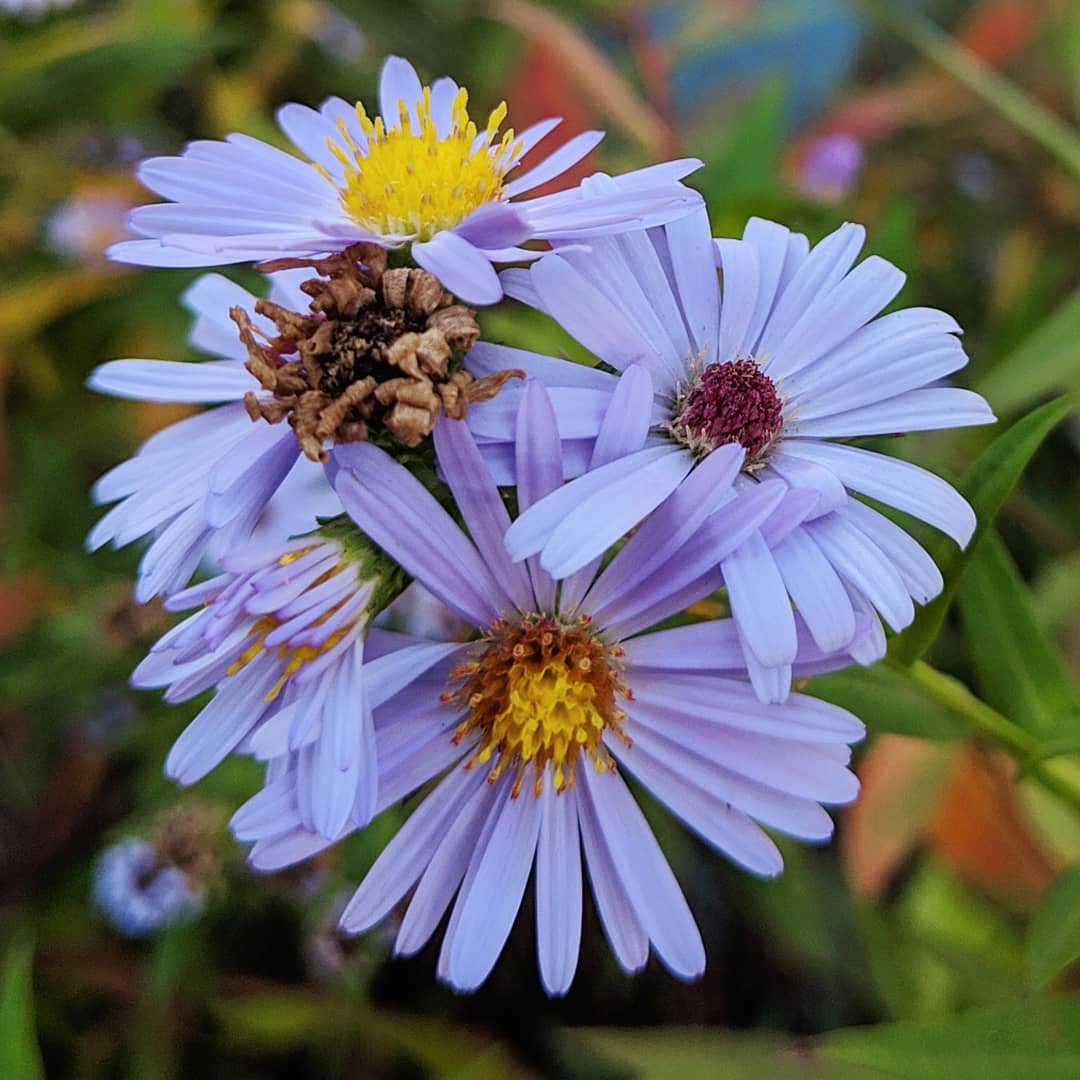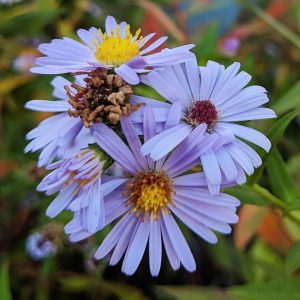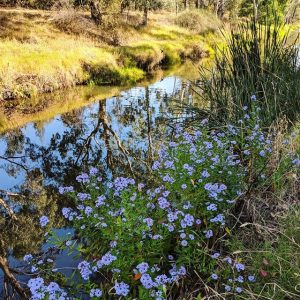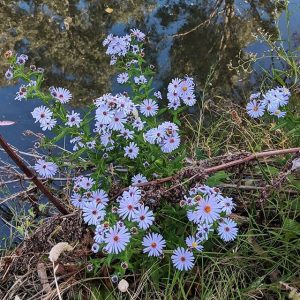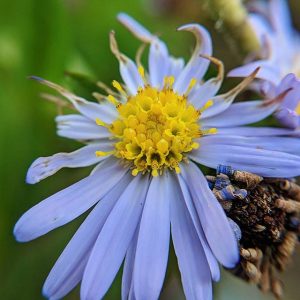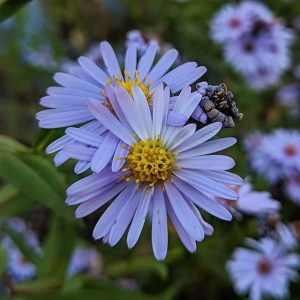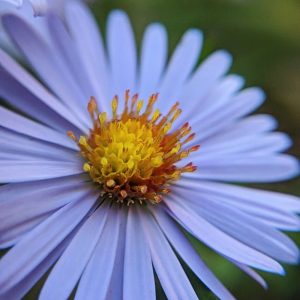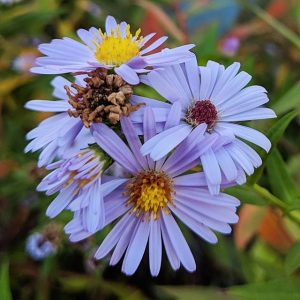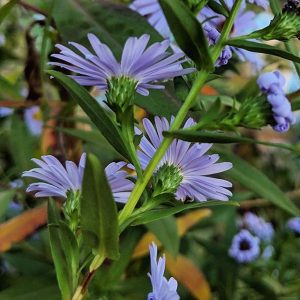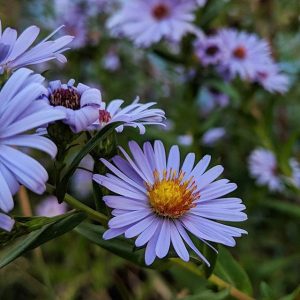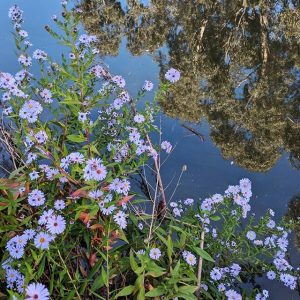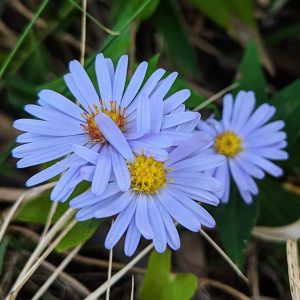New York Aster or Michaelmas Daisy (Symphyotrichum novi-belgii), a North American perennial aster adopted into ornamental cultivation and from there into weediness.
New York Aster sits among the spectrum of cultivated white/blue/purple daisies that get assigned the name ‘Michaelmas’. Vicflora treats our local alien purple daisies as S. novi-belgii, and the parameters that I can see (leaf shape, glabrous stems) certainly match up (vs. the ‘original’ Michaelmas, Aster amellus, or the hairy New England Daisy, S. novae-angliae). New York Aster is widely established as a weed across Europe.
This species became available in European cultivation from 1710 (Briggs et al 1989), and was available in Melbourne from the nursery of T. Lang & Co. by 1873. The first records of escaped plants in Australia were made in a railway paddock in northern NSW in 1955, and then along an urbanised rivulet in Launceston TAS in 1961. In Victoria, the species was found infesting the shores of the pondage at Mount Beauty in 1964 (it has continued to be reported on the lake as recently as 2012); further infestations have turned up periodically on rural roads and drainages, and on the Yarrowee River in Ballarat.
However, excepting fringe occurrences and a 1964 collection from Mont Albert that lacks detail, it has only been recorded once within the metropolitan, at Yarra Bend Park in 2004. New York Aster is known to be self-incompatible, meaning that cultivated and adventive populations are generally not diverse enough to set seed. Consequently, to escape and spread here the species tends to be reliant on discarded or transported root material. Once free of managed beds, New York Asters are capable of spreading extensively via clonal material, and can achieve long-term persistence in this manner; famously, a clonal colony in a fen near Cambridge UK is believed to date to the 1860s if not earlier.
The photographed plants are established in a single patch on Kororoit Creek in Sunshine.
View Original Post on Instagram
Search for information about Symphyotrichum novi-belgii in the Flora of Victoria
View information and occurrences of Symphyotrichum novi-belgii on the Atlas of Living Australia
